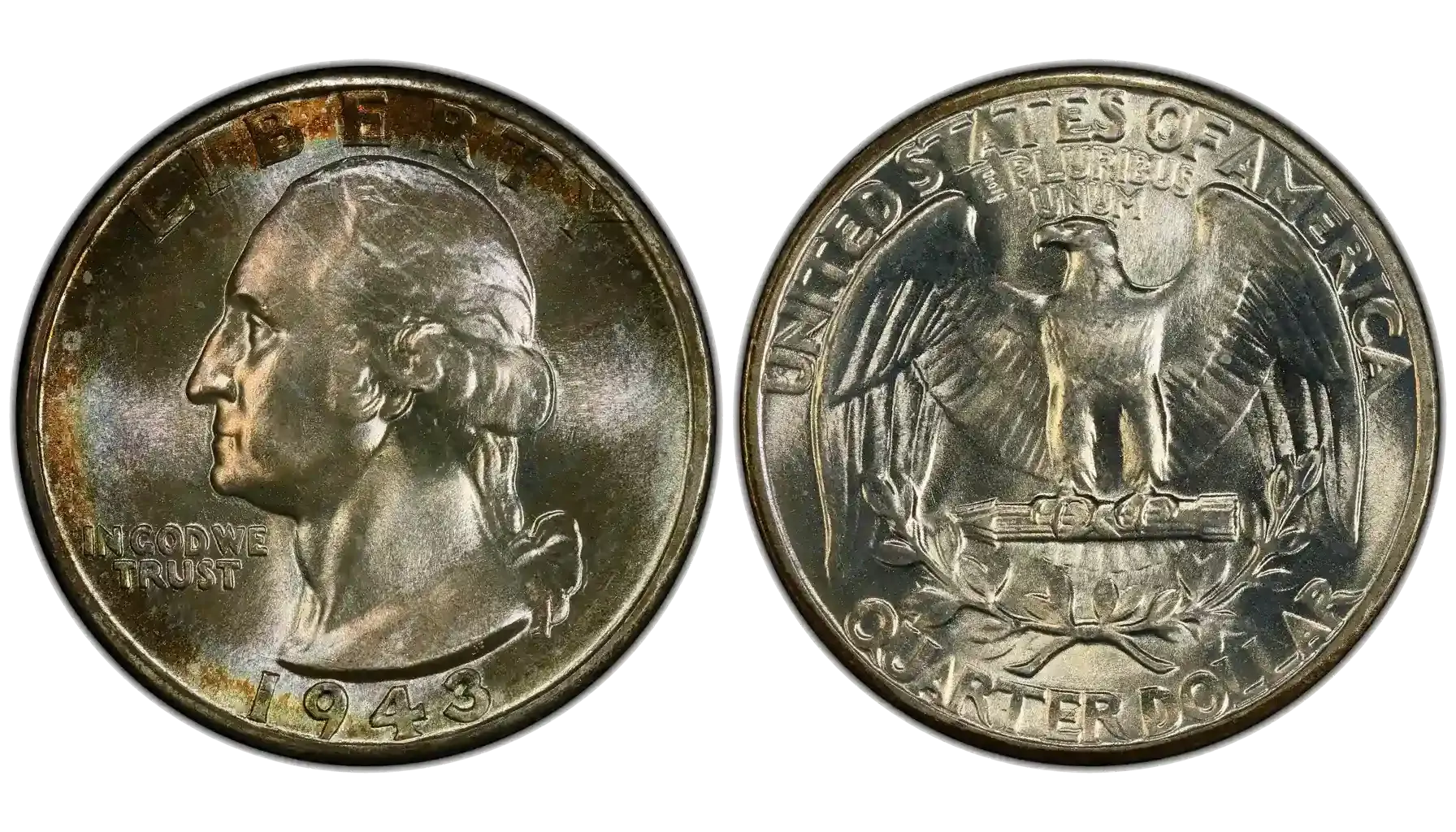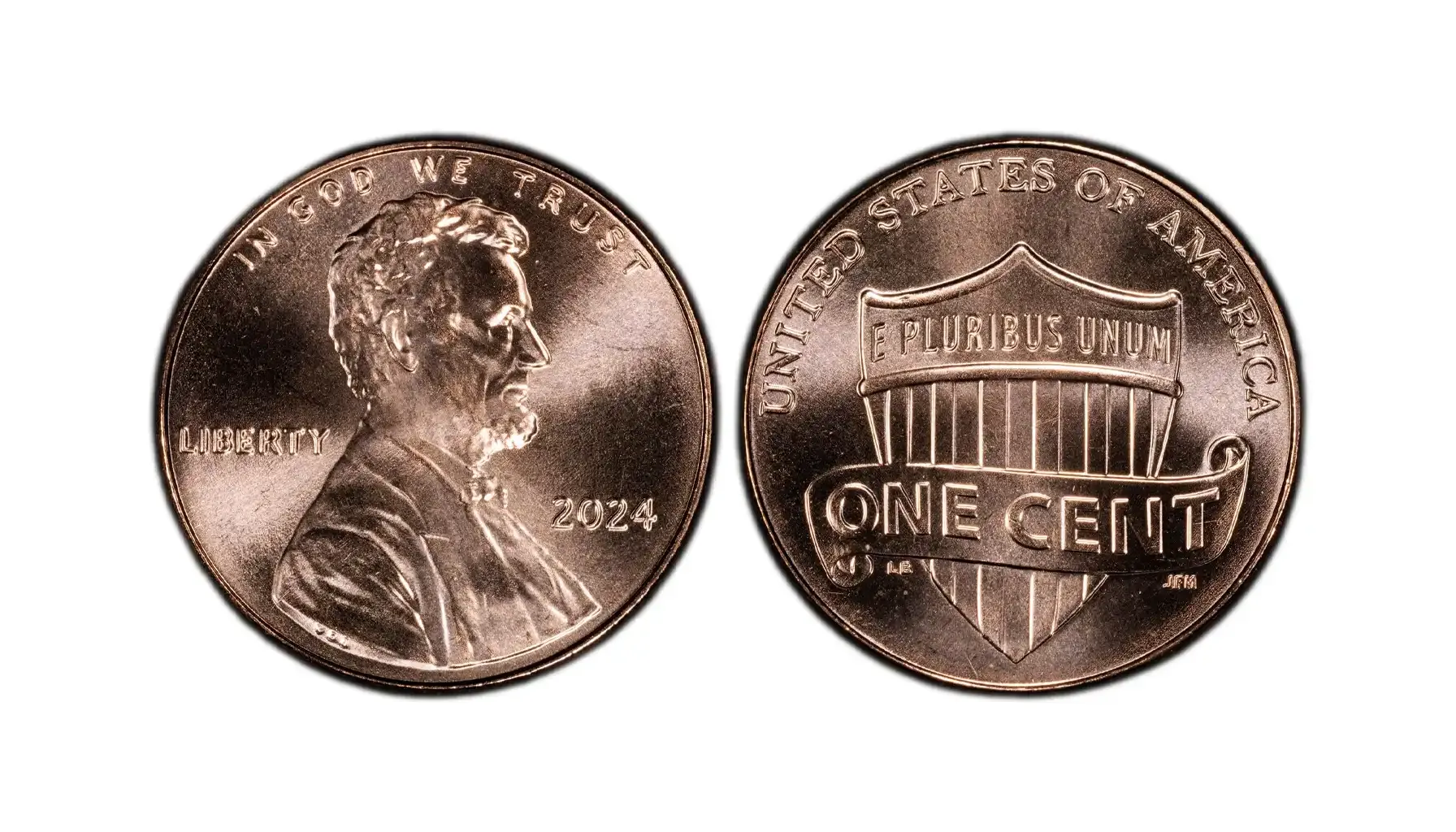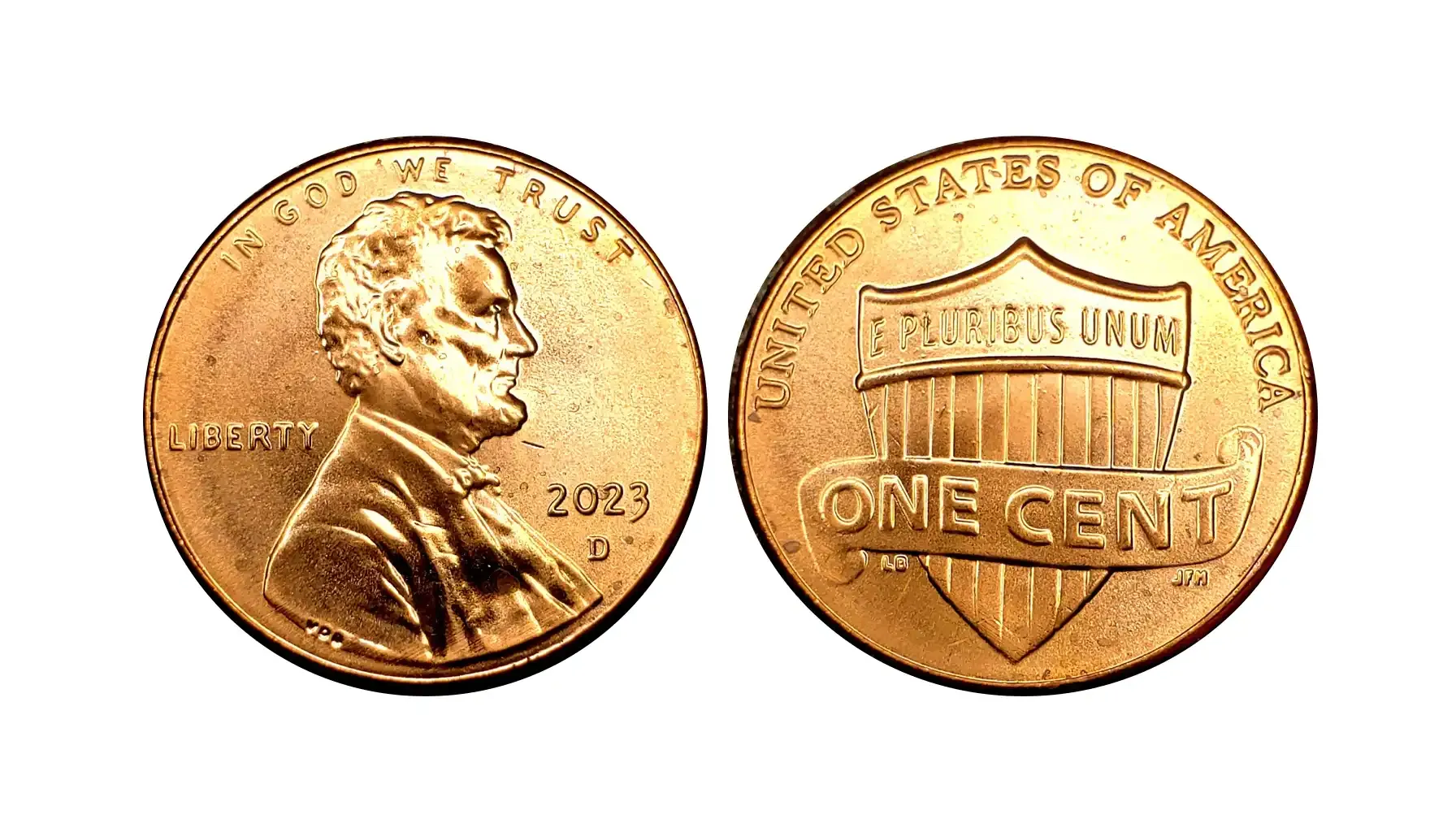Contents:
- Quick Facts About the 1910 Penny
- The Background of the 1910 Wheat Penny
- Design Features and the Main Characteristics
- A Brief Note about Designations
- The Penny 1910 Varieties by Mint
- Rare 1910 Penny Errors to Look For
- What Determines the 1910 Wheat Penny Value
- How Much Is a 1910 Wheat Penny Worth? A Full Guide
Numismatic creations that have been released long years ago are typically more captivating than those of modern production. Among them, one may find standard coins of general circulation and special strikes that were produced with distinctive attributes (=designations) that make them unique. A great example that combines both is the 1910 Lincoln wheat penny.
Following the controversially minted 1909 VDB penny, the 1910 issue had to endure the weight of its past edition’s legacy while establishing itself as a reliable and solid piece of the new Lincoln cent series. But how can you identify this coin? Which varieties are worth keeping, and what is a 1910 wheat penny worth? Let us check.
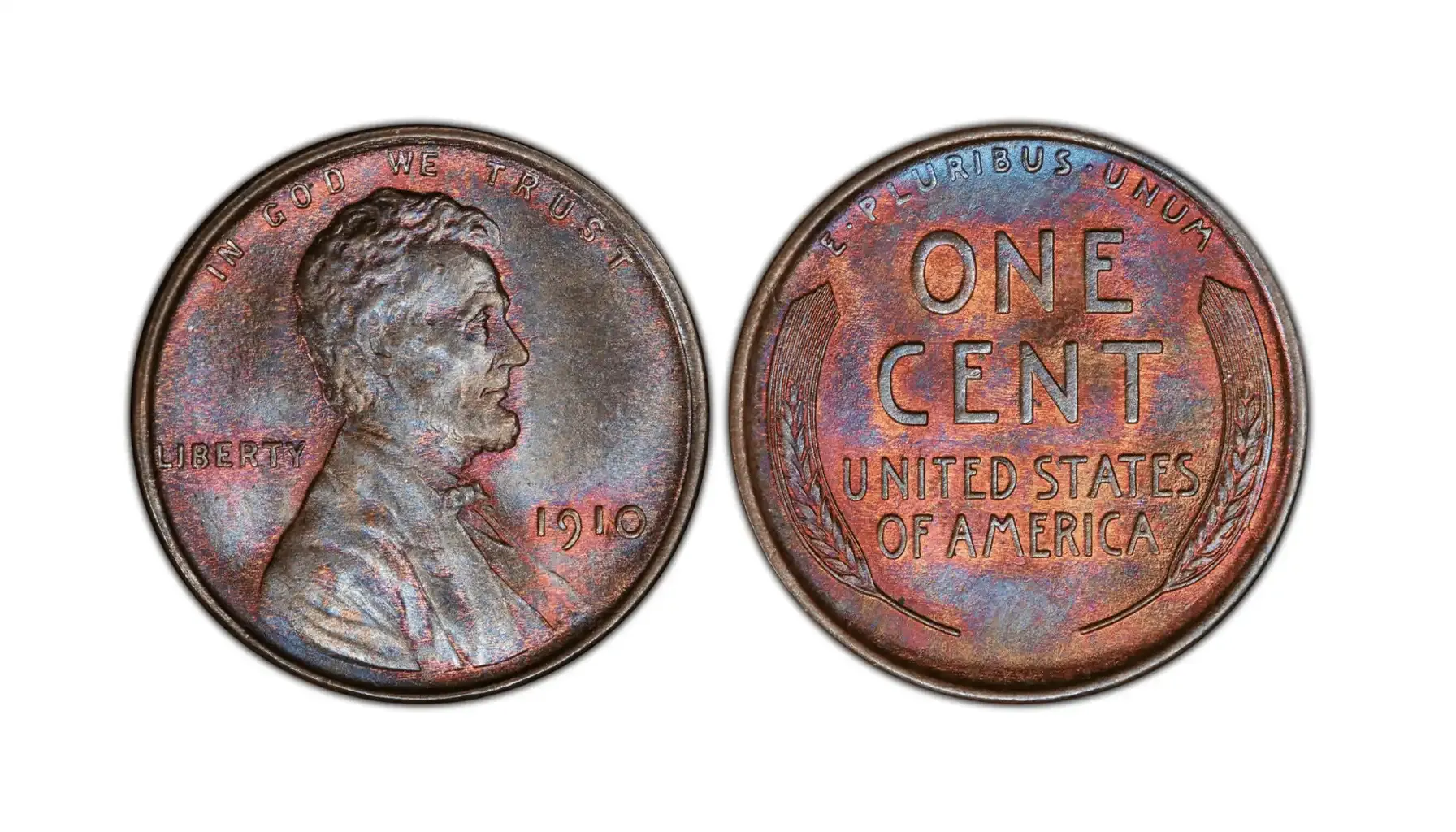
Quick Facts About the 1910 Penny
Coin Name | 1910 Lincoln Wheat Penny |
Designer | Victor David Brenner |
Obverse Design | Portrait of Abraham Lincoln |
Reverse Design | Two wheat ears surrounding “ONE CENT” |
Series Start | 1909 |
Series End | 1958 |
Mint Locations | Philadelphia and San Francisco |
Notable Varieties | 1910-S, errors (e.g., off-center, RPM) |
Estimated Mintage | ~153 million total (detailed below) |
Key Collector Interest | Early Lincoln design |
The Background of the 1910 Wheat Penny
Cents are considered the smallest denominations today, but their past is not minute but rich.
The penny from 1910 is an early example of the legendary Lincoln cent series that started a year prior, in 1909, with the idea to commemorate the 100th anniversary of Abraham Lincoln’s birth. As such, it was designed by Victor David Brenner, the Lithuanian-American sculptor, engraver, and medalist, who impressed Theodore Roosevelt with a bas-relief of Lincoln. This is how Brenner earned his reputation and got commissioned by the US Mint to create the design for a new nickel.
The 1909 VDB cent, being the first in the series, was subject to criticism because of the initials displayed on the coin's reverse. This primarily happened for the reason that the US Mint considered the figure of Victor David Brenner too prominent to overshadow his creation itself. When preparing the next iteration, released in 1910, the problem was preliminarily addressed by eliminating initials, though the classic Wheat Penny design remained popular among collectors and the general public.
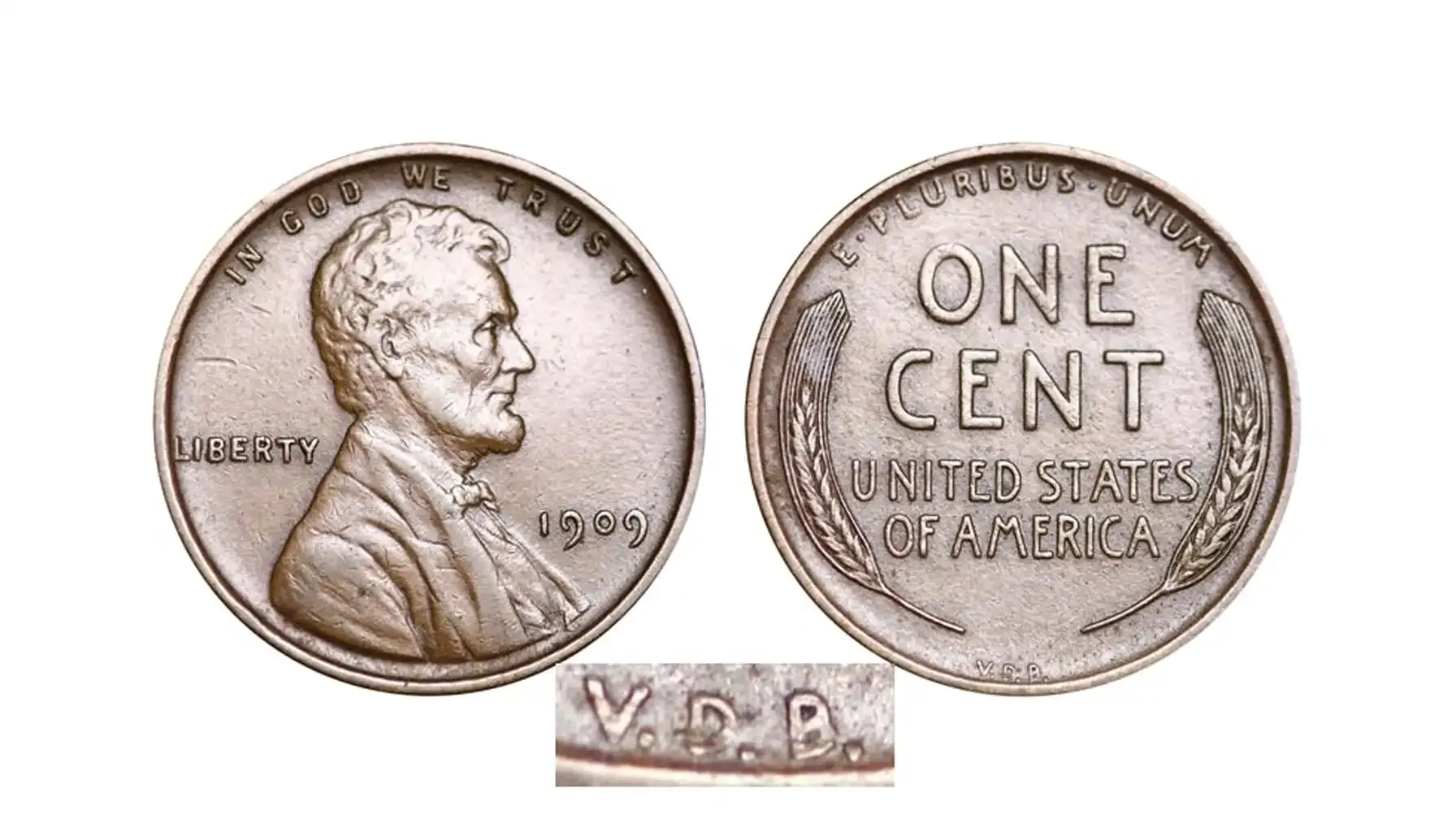
Design Features and the Main Characteristics
Obverse: The obverse features a right-facing portrait of Abraham Lincoln, with the inscriptions “IN GOD WE TRUST” above the profile, “LIBERTY” appearing to the left, the date “1910” placed to the right of the portrait, and a mint mark just below the date (when produced in San Francisco only).
Reverse: The reverse, on its part, showcases two stylized wheat stalks curving inward along the left and right rims. Between them are the inscriptions “ONE CENT” and “UNITED STATES OF AMERICA,” and just above the denomination is the national motto “E PLURIBUS UNUM” (which means “Out of many, one”).
The Main Characteristics | |
Denomination | One cent (1C) |
Year of Issue | 1910 |
Composition | 95% copper, 5% tin and zinc |
Weight | 3.11 grams (±0.13 g tolerance) |
Diameter | 19.05 mm |
Thickness | 1.52 mm (approximate) |
Edge Type | Plain (without reeding) |
Design Type | Lincoln Wheat Ears Reverse |
Designer | Victor David Brenner |
Mint Marks | None for Philadelphia “S” for San Francisco |
A Brief Note about Designations
Before we dive into coin variations, it is vital to understand the attributes that are definitive of the overall appeal and the 1910 Lincoln penny value, not to mention. Color plays a significant role, and to describe the surface, numismatists employ designations that are revealed as follows:
BN (Brown): Indicates that a cent has toned fully to brown due to oxidation.
RB (Red-Brown): Shows a mix of original red mint luster and brown toning, typically between 5% to 95% red.
RD (Red): Reserved for coins that retain at least 95% of their original red mint color.
The Penny 1910 Varieties by Mint
1910 1C
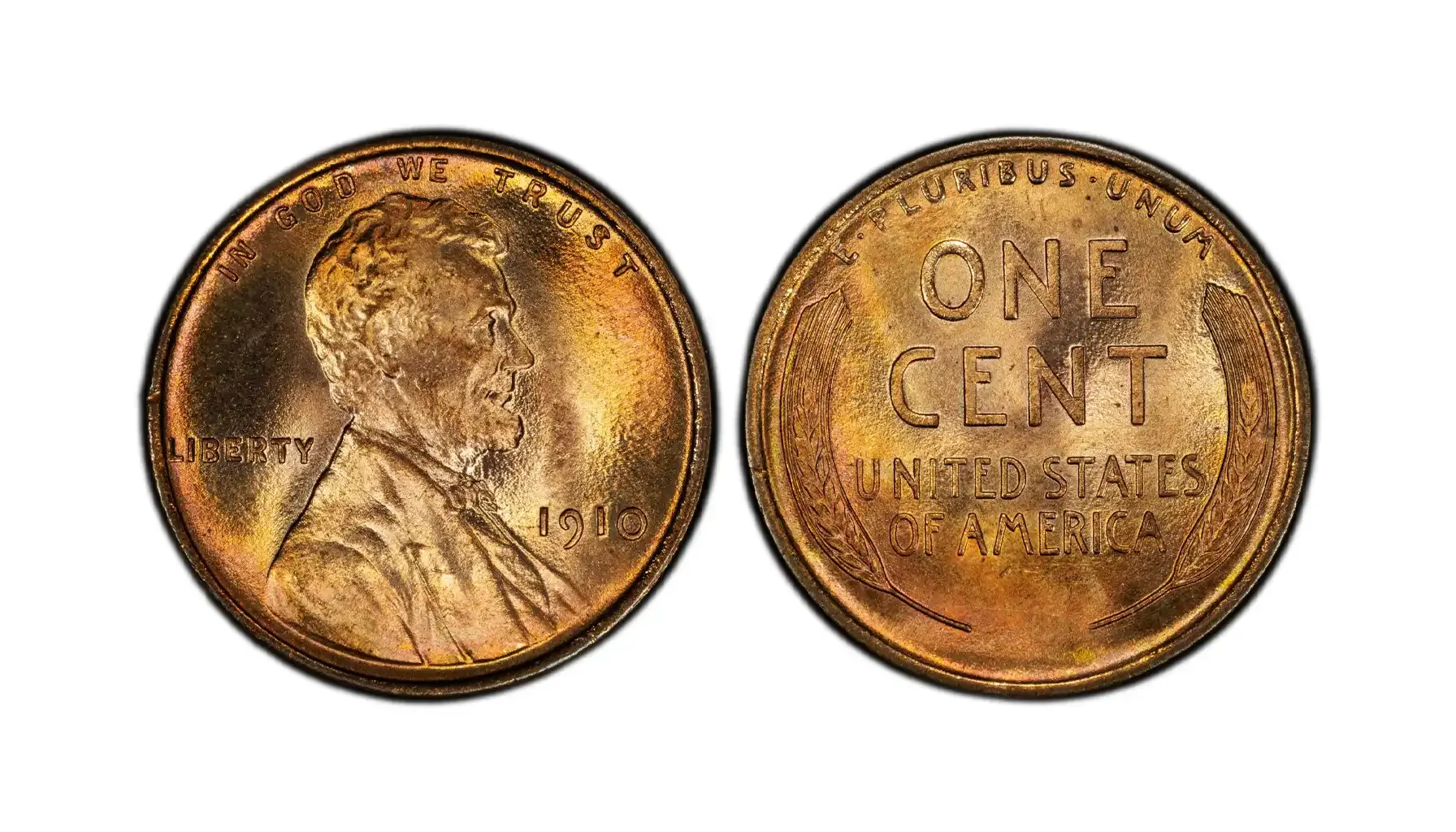
Produced by: Philadelphia Mint
Mintage: 146,798,813
Auction Record: $10,869 for MS67+RD
In 1910, the Philadelphia Mint struck nearly 147 million 1910 penny no mint mark coins, yet even this large production could not meet the public demand. This event reflected the still-growing popularity of a new design, which was not scarce when not in high-grade uncirculated condition. The top known grade is MS67+RD, with roughly 20 examples certified at this level and none finer, which makes them an ultimate solution for the date.
1910-S 1C
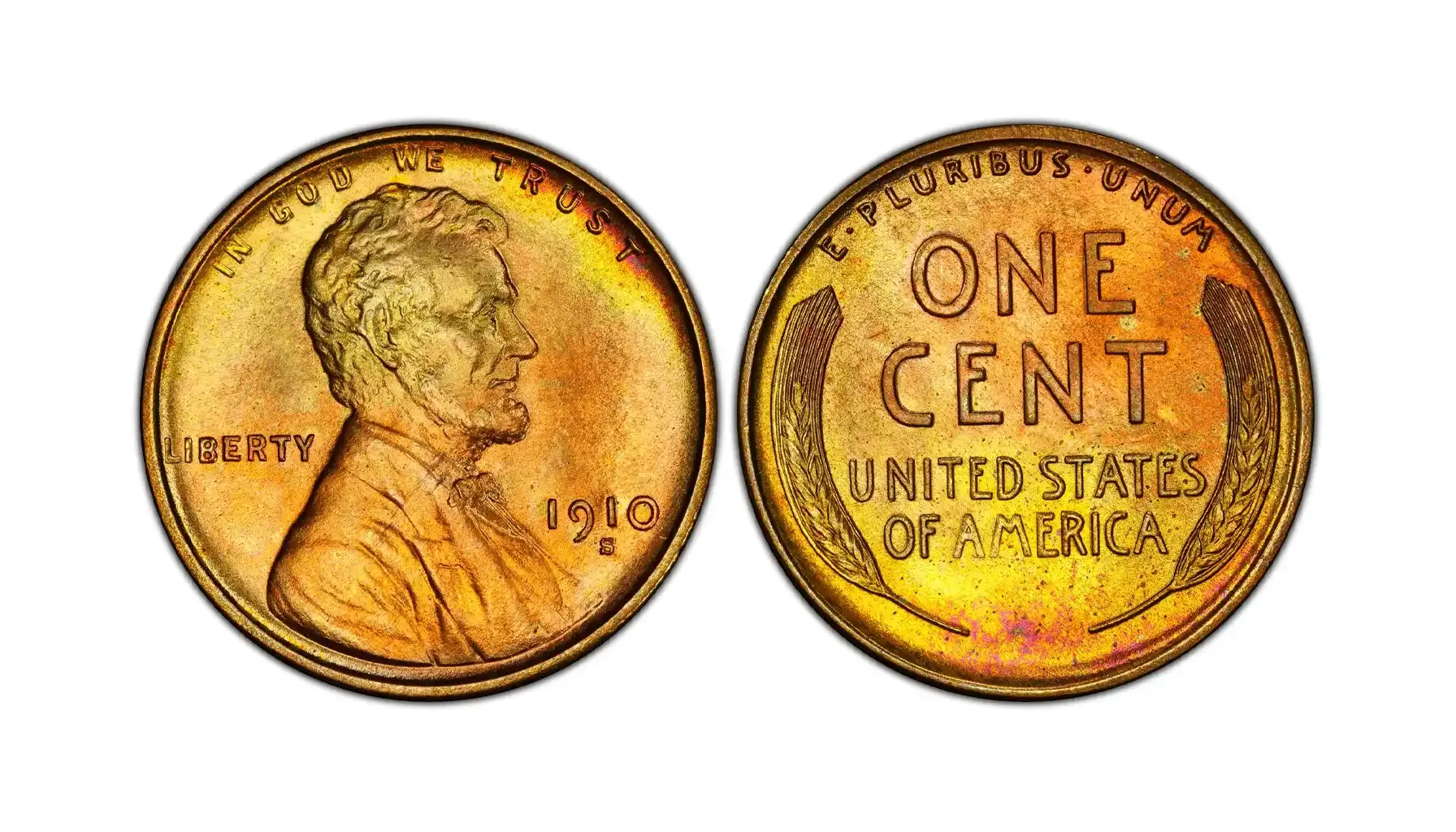
Produced by: San Francisco Mint
Mintage: 6,045,000
Auction Record: $48,000 for MS67+RD
Coins grow in value over time, and the 1910 S penny is no exception. In fact, it was minted in significantly lower numbers, with a bit more than 6 million coins produced. Finding well-struck examples in high grades is a true challenge, which raises the 1910 S penny value for good. Most coins entered circulation and show signs of wear, which is why exceptionally rare samples in MS67+RD condition may be worth thousands at the most reputable auctions ever found.
1910 1C (Proof)
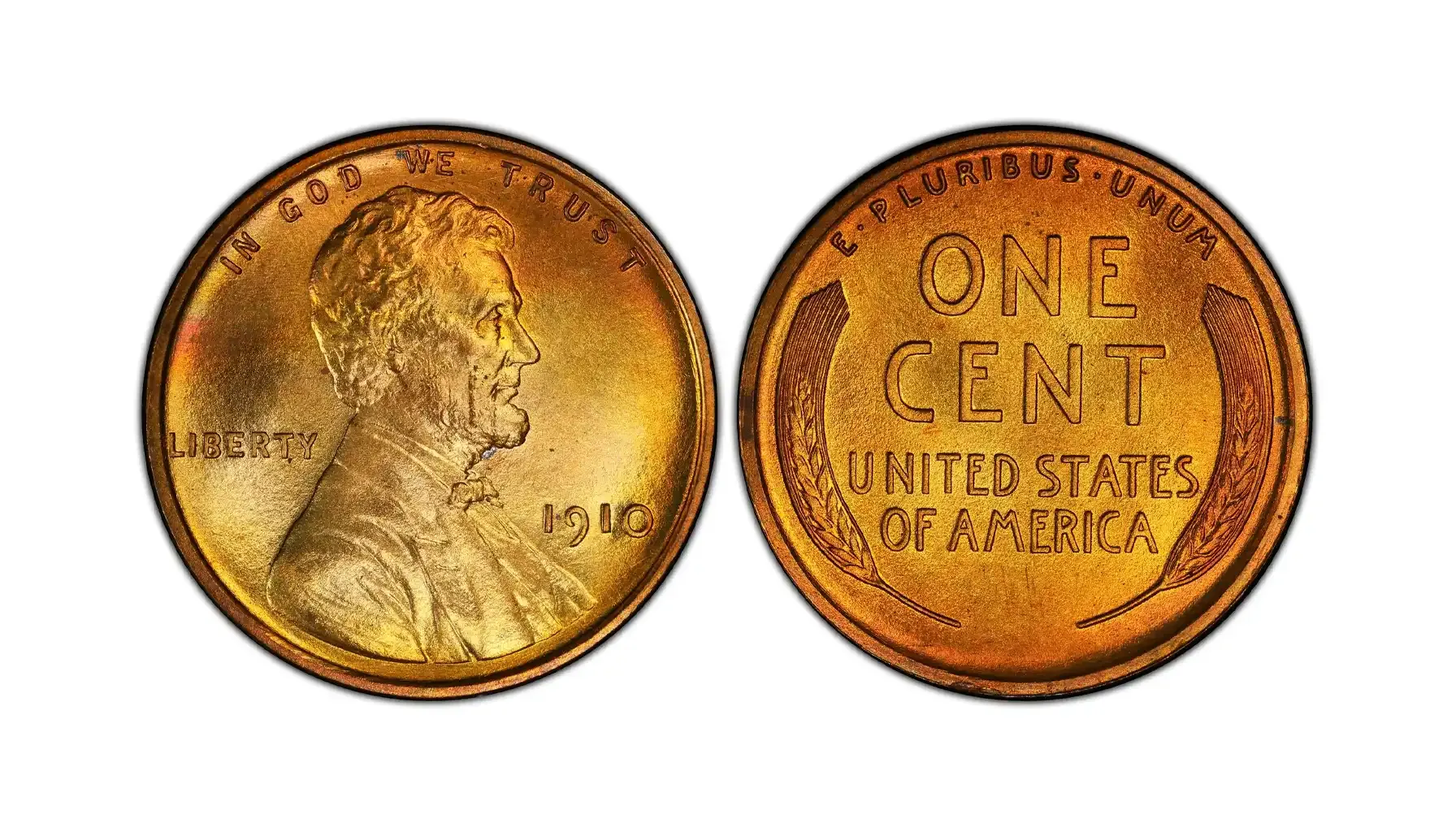
Produced by: Philadelphia Mint (Proof Issue)
Mintage: 2,405
Auction Record: $52,875 for PR67+RD
Though some numismatists believe that there are no proof coins released in 1910, the reality differs. The Philadelphia Mint released only 2,405 proof specimens, featuring sharp details with brilliant, mirror-like fields, intended for collectors. In 2019, a superb PR67+RD example was sold for an astounding $52,875, which was a record for this low-mintage issue.
Rare 1910 Penny Errors to Look For
Even when coins are taken good care of and kept away from circulation, no coin is completely immune to production flaws. As soon as we navigate the auction lists, numismatic creations from 1910 may exhibit a number of minting errors that make them significantly more valuable to collectors. Here are the most notable deviations that cannot be considered trite or trivial.
Penny Lamination Strike in S
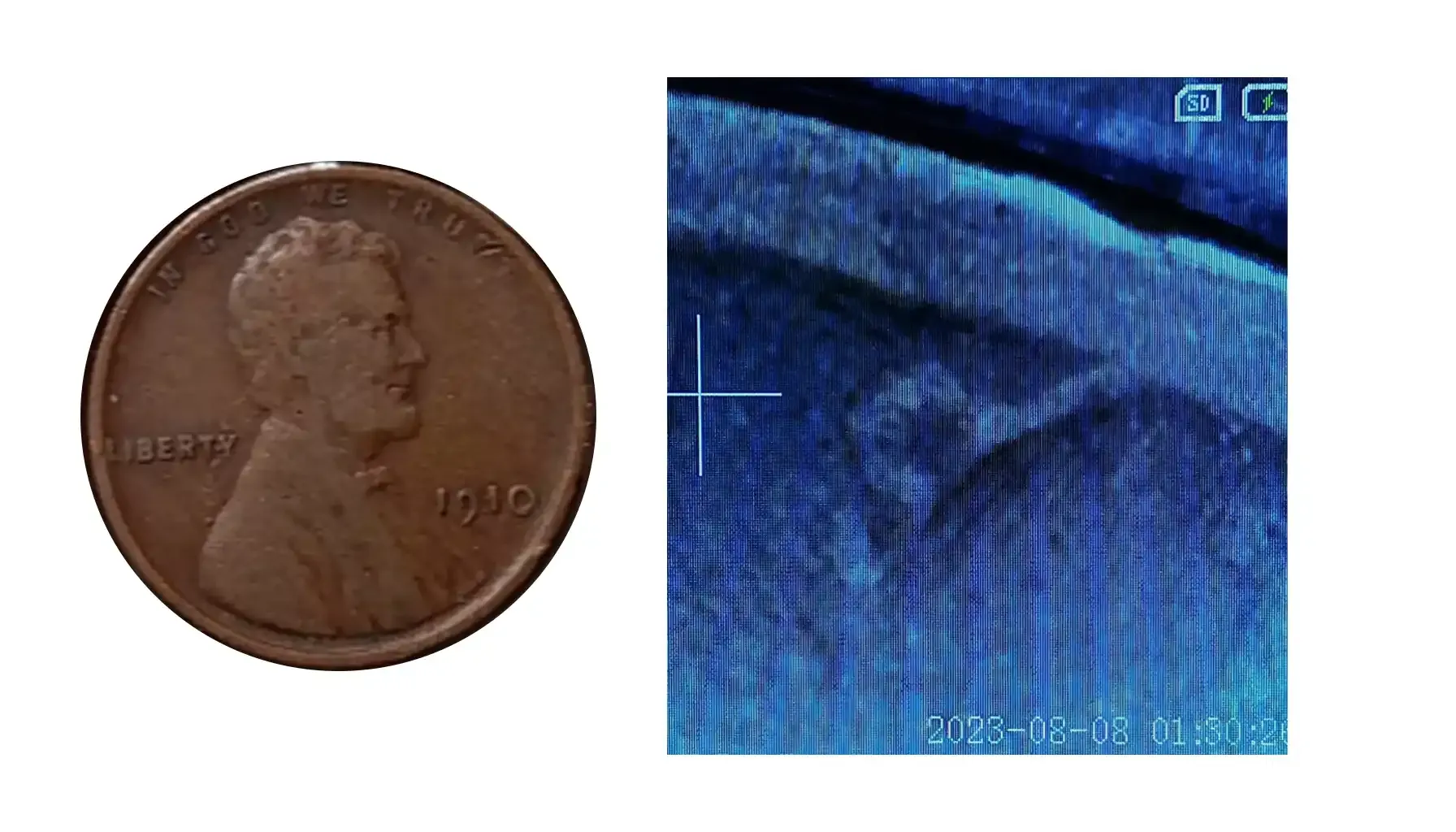
Auction Record: $105
This occurs when a part of the metal surface peels away due to impurities in the planchet. The 1910-S penny with a lamination strike is one of the more affordable errors, but still collectible due to its distinct visual flaw.
Struck Through Cloth
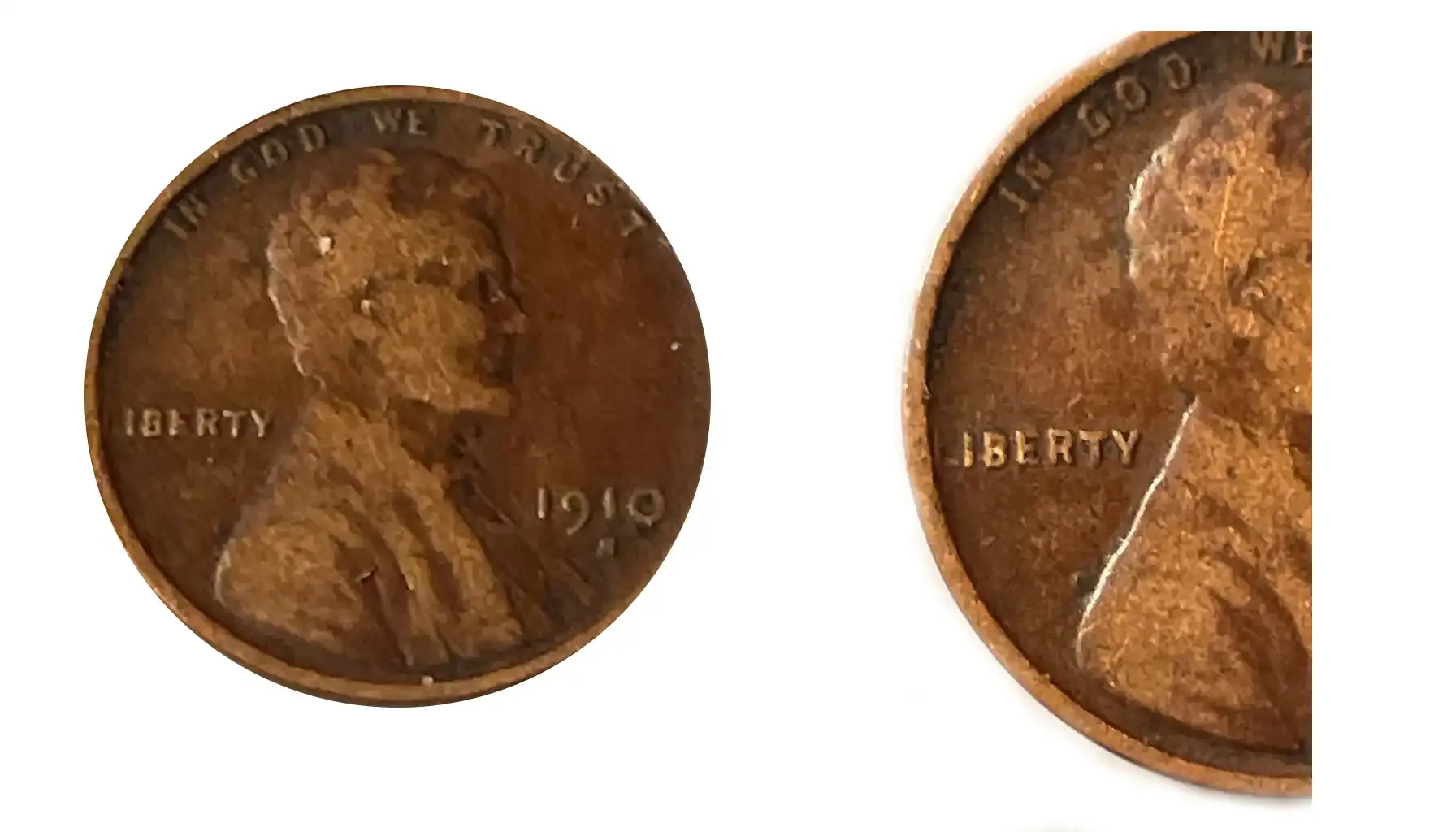
Auction Record: $150
This error happens when a piece of cloth interferes with the strike, leaving a textured, fabric-like impression on the surface. For a 1910 issue, such an error is rare and highly desirable for collectors, but the 1910 penny worth is not that impressive.
Missing “L” in LIBERTY

Auction Record: $900
The “Missing L” in “LIBERTY” is an extremely rare 1910 wheat penny error. Because it alters one of the coin’s key inscriptions, it is highly noticeable and can be worth thousands.
Related articles: Penny Errors: Small Mistakes, Big Collectibles
What Determines the 1910 Wheat Penny Value
Is a 1910 penny worth anything? This mainly depends on several factors that are characteristic of certain pieces rather than an entire series. Apart from errors, these are the aspects that define the value of a 1910 penny.
Condition (Grade): As a rule, coins are assessed on a 70-point scale, with higher numbers indicating better preservation. The higher the grade, the higher the price.
Color Designation (BN, RB, RD): Since 1910 1-cent coins have been made primarily of copper, and their surface color changed over time. Coins designated RD (Red) are the most valuable, while RB (Red-Brown) and BN (Brown) represent decent pieces with modest prices to set.
Mint Mark: The source is an important constituent, as it reveals how scarce the coin is. The 1910-S has a much lower mintage and is significantly scarcer in high grades, which is why it is generally more valuable than its Philadelphia counterpart.
How Much Is a 1910 Wheat Penny Worth? A Full Guide
How much is a 1910 penny worth? Indeed, determining how much a coin would cost is not always straightforward. Auctions may be too intriguing (as they present flabbergasting prices), but these records reflect only extreme cases, set amidst bidding wars. In reality, most coins trade within more modest ranges, depending on factors mentioned above. Prices do fluctuate, and it is always important to stay up-to-date.
Grade | 1910 | 1910-S | 1910 Proof |
Good (G4) | $0.25 – $0.50 | $2 – $4 | – |
Very Good (VG8) | $0.50 – $1 | $4 – $7 | – |
Fine (F12) | $1 – $2 | $6 – $10 | – |
Very Fine (VF20) | $2 – $3 | $10 – $20 | – |
Extremely Fine (EF40) | $3 – $5 | $20 – $35 | – |
About Uncirculated (AU50) | $6 – $10 | $35 – $75 | – |
Mint State 60 (MS60) | $15 – $25 | $100 – $175 | – |
Mint State 63 (MS63) | $35 – $60 | $200 – $375 | – |
Mint State 65 (MS65) | $75 – $150 | $750 – $1,500 | – |
Mint State 67 (MS67) | $1,000 – $1,500 | $3,500 – $5,000 | – |
Proof 60 (PR60) | – | – | $100 – $150 |
Proof 63 (PR63) | – | – | $200 – $300 |
Proof 65 (PR65) | – | – | $400 – $700 |
Proof 67 (PR67+RD) | – | – | $3,000 – $5,000+ |
*To learn more about current value ranges and investment potential, one is free to rely on additional numismatic tools like Coin ID Scanner, which can help identify, grade, and evaluate coins using real-time market data, auction histories, and expert pricing algorithms.
Heritage hidden beneath the copper skin of a 1910 cent is immense, for even the smallest coin can leave the deepest impressions in the end.

